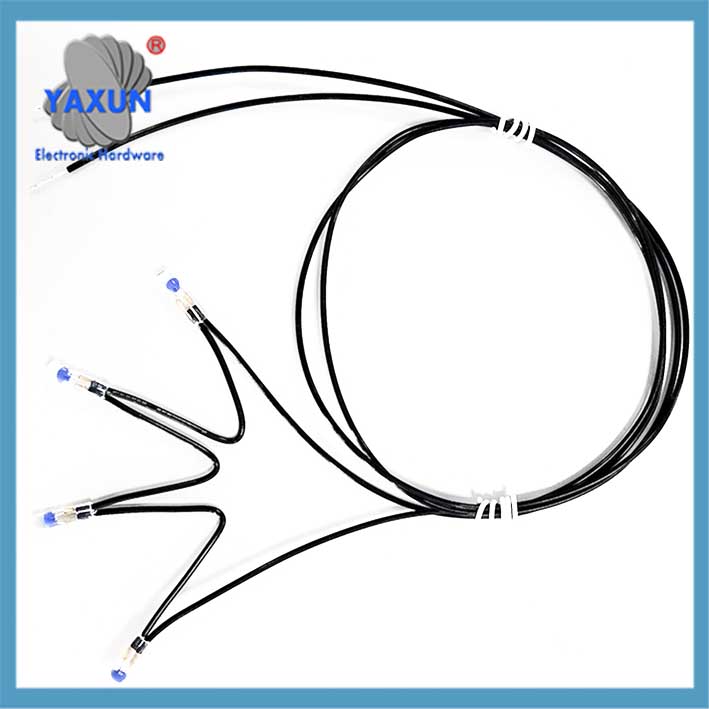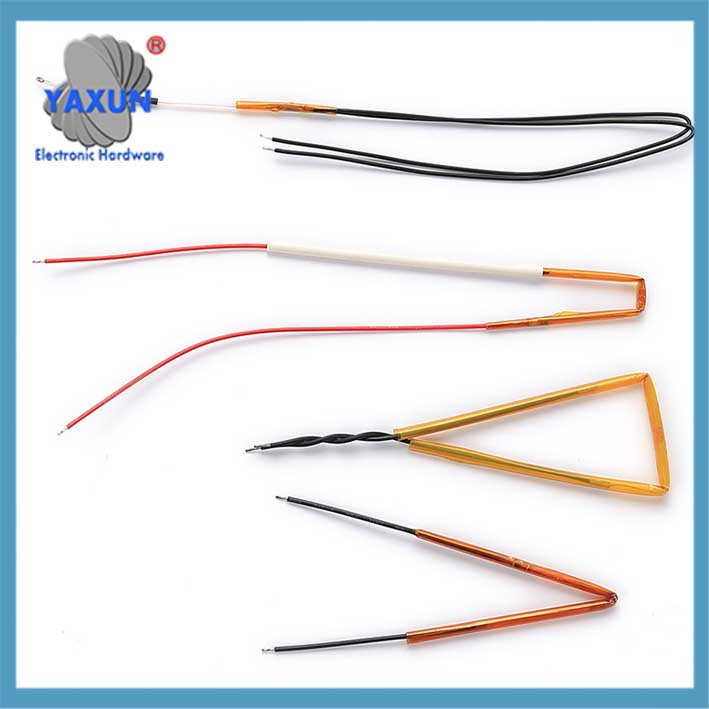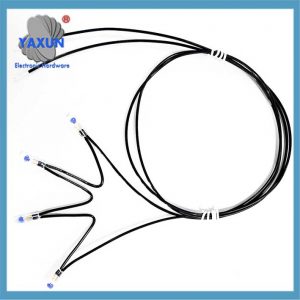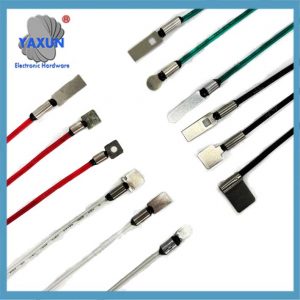Danh mục sản phẩm
- cầu chì nhiệt 32
- cầu chì gắn trên bề mặt 12
- nhiệt điện trở 36
- Giá đỡ cầu chì gắn PCB 27
- Dây nịt dây điện 6
- Giá đỡ cầu chì lưỡi 17
- máy điều nhiệt 50
- Cầu chì điện 24
- Cảm biến nhiệt độ ô tô 7
- Bộ ngắt mạch nhiệt 22
- Hộp đựng cầu chì 36
- Cảm biến nhiệt độ 75
- Công tắc nhiệt 68
- Cầu chì ô tô 20
- Cầu chì chốt xuống 8
Thẻ sản phẩm
Xe điện (xe điện) Nhà cung cấp cảm biến nhiệt độ pin
Cảm biến nhiệt độ pin có ba đặc tính kỹ thuật chính: chủ đạo nhất là nhiệt điện trở NTC (hệ số nhiệt độ âm); thứ hai là điện trở bạch kim màng mỏng (PT100/PT200); và có những cảm biến không dây thụ động đang nổi lên. Cần tập trung vào việc so sánh sự khác biệt về hiệu suất và các kịch bản ứng dụng của chúng.
Cảm biến nhiệt độ ắc quy ô tô, vấn đề này rất quan trọng trong lĩnh vực phương tiện sử dụng năng lượng mới. Ở phần trước, chúng ta đã thảo luận về cảm biến nhiệt độ ô tô và cảm biến nhiệt độ khí thải. Bây giờ hãy tập trung vào thành phần cốt lõi của pin. Người dùng có thể là kỹ thuật viên hoặc chủ sở hữu phương tiện sử dụng năng lượng mới muốn biết chi tiết kỹ thuật về giám sát nhiệt độ ắc quy.
Cảm biến nhiệt độ pin có ba đặc tính kỹ thuật chính: chủ đạo nhất là nhiệt điện trở NTC (hệ số nhiệt độ âm); thứ hai là điện trở bạch kim màng mỏng (PT100/PT200); và có những cảm biến không dây thụ động đang nổi lên. Cần tập trung vào việc so sánh sự khác biệt về hiệu suất và các kịch bản ứng dụng của chúng.
Chiến lược bố trí cảm biến cho ắc quy hình vuông/hình trụ/dạng mềm của ắc quy ô tô. Đây là điểm yếu của các cấu trúc pin khác nhau trong ngành đòi hỏi các giải pháp tùy chỉnh. Ví dụ, Pin hình trụ của Tesla sử dụng mảng chu vi, trong khi pin phiến của BYD sử dụng tích hợp nắp trên.
An toàn cần nhấn mạnh yêu cầu về độ chính xác, và độ chính xác ± 0,5oC là rất quan trọng để cảnh báo thoát nhiệt. Công nghệ không dây thụ động rất thú vị. Nó có thể giải quyết vấn đề nối dây trong bộ pin bằng cách lấy năng lượng thông qua siêu âm áp điện hoặc cảm ứng điện từ. Đây có thể là xu hướng trong tương lai.
Tác động của sự thất bại cũng cần được nhắc nhở, chỉ ra rằng việc giám sát nhiệt độ không thành công có thể dẫn đến hiện tượng thoát nhiệt.
Xe điện (xe điện) Cảm biến nhiệt độ pin đóng vai trò quan trọng trong việc theo dõi và quản lý nhiệt độ của pin EV, đảm bảo hiệu suất tối ưu, sự an toàn, và tuổi thọ. Những cảm biến này, thường là nhiệt điện trở NTC, rất quan trọng để phát hiện hiện tượng quá nhiệt và kích hoạt các biện pháp an toàn như giảm tốc độ sạc hoặc ngắt kết nối pin để tránh hiện tượng thoát nhiệt.
Sau đây là phân tích kỹ thuật cảm biến nhiệt độ ắc quy ô tô, bao gồm các nguyên tắc cốt lõi, giải pháp ứng dụng và xu hướng phát triển:
TÔI. Chức năng cốt lõi và yêu cầu kỹ thuật
Theo dõi nhiệt độ chính xác:
Giám sát thời gian thực nhiệt độ mô-đun/tế bào pin (thường trong khoảng -40oC ~ 125oC), với độ chính xác ± 0,5 ℃, để ngăn chặn sự thoát nhiệt (cảnh báo kích hoạt khi nhiệt độ> 60oC).
Nhiệt độ cao có thể gây thoát nhiệt do phân hủy ion lithium, và tuổi thọ pin sẽ giảm khoảng 20% cứ tăng nhiệt độ lên 10oC.
Theo dõi nhiệt độ pin:
Cảm biến nhiệt độ pin EV liên tục theo dõi nhiệt độ của từng pin trong gói. Điều này rất quan trọng vì hiệu suất và tuổi thọ của pin bị ảnh hưởng đáng kể bởi nhiệt độ.
Ngăn ngừa quá nhiệt:
Quá nóng có thể dẫn đến giảm dung lượng pin, tốc độ sạc chậm hơn, và thậm chí cả sự thoát nhiệt, có khả năng gây cháy hoặc nổ. Cảm biến nhiệt độ giúp ngăn ngừa những vấn đề này bằng cách phát hiện quá nhiệt và bắt đầu các giao thức an toàn.
Tối ưu hóa hiệu suất:
Bằng cách theo dõi nhiệt độ, hệ thống quản lý pin (BMS) có thể điều chỉnh tốc độ sạc và xả để tối đa hóa hiệu suất và tuổi thọ của pin.
Đảm bảo an toàn:
Cảm biến nhiệt độ là một phần quan trọng của hệ thống an toàn trên xe điện, giúp ngăn chặn các tình huống nguy hiểm tiềm ẩn như thoát nhiệt.
Các loại cảm biến phổ biến:
NTC (Hệ số nhiệt độ âm) điện trở nhiệt thường được sử dụng làm cảm biến nhiệt độ trong pin EV. Chúng giảm điện trở khi nhiệt độ tăng, cung cấp một cách đáng tin cậy để theo dõi sự thay đổi nhiệt độ.
Vị trí của cảm biến:
Cảm biến nhiệt độ có thể được đặt bên trong pin để đọc chính xác hoặc đặt bên ngoài trên bộ pin để theo dõi nhiệt độ bề mặt.
Tích hợp với BMS:
Dữ liệu từ cảm biến nhiệt độ được đưa vào Hệ thống quản lý pin (BMS), sử dụng thông tin này để kiểm soát việc sạc, xả thải, và hệ thống quản lý nhiệt.
Về bản chất, Cảm biến nhiệt độ pin EV là một thành phần quan trọng của hệ thống an toàn, có hiệu quả, và xe điện hiệu suất cao.
So sánh loại công nghệ chính thống
| kiểu | Nguyên tắc làm việc | thuận lợi | Hạn chế |
|———————-|————————————–|————————–|————————–|
| Nhiệt điện trở NTC | Điện trở giảm theo cấp số nhân khi nhiệt độ tăng (khoảng 10kΩ ở 20oC) | Chi phí thấp và phản hồi nhanh (0.5-5 giây) | Độ chính xác nhiệt độ cao giảm (>125oC)|.
| Điện trở bạch kim (PT100) | Điện trở thay đổi tuyến tính theo nhiệt độ (100Ω ở 0oC) | Độ chính xác cao (± 0,1), sự ổn định tốt | Chi phí cao (4-10 gấp đôi NTC)|.
| Cảm biến không dây thụ động | Cung cấp năng lượng cảm ứng điện từ/siêu âm áp điện, truyền dữ liệu không dây | Không có hệ thống dây điện, chống nhiễu điện từ | Yêu cầu giao thức truyền thông tùy chỉnh |.
Ii. Chiến lược bố trí loại pin và cảm biến
Pin vuông (chẳng hạn như pin lưỡi BYD)
Khu vực cực che phủ: Mảng NTC được bố trí cách cực dương và cực âm 5mm để theo dõi nhiệt độ tai cực (chênh lệch nhiệt độ ≈2-3oC).
Điểm hàn thanh cái: Cảm biến nhúng phát hiện nhiệt độ tăng bất thường tại điểm kết nối (Bảo vệ kích hoạt > 5oC / phút).
Pin hình trụ (chẳng hạn như Tesla 4680)
Mảng vòng mặt cuối: NTC được phân bố đều trên chu vi của nắp trên để theo dõi độ dốc nhiệt độ (lỗi ± 1,5oC).
Giám sát trục của lõi cuộn dây: NTC tích hợp trong PCB linh hoạt được chèn vào khe hở của lõi cuộn dây, và sự thoát nhiệt được cảnh báo 30 vài giây trước.
Pin pin mềm
NTC vi mô (đường kính 0,5mm) được nhúng sẵn và yêu cầu đóng gói màng cách nhiệt loại UL94 V0 (độ dày ≤ 0,1mm).
Iii. Xu hướng phát triển công nghệ
Giám sát phản ứng tổng hợp đa chiều
Công nghệ được cấp bằng sáng chế của Jiangxi Isuzu tích hợp tín hiệu nhiệt độ và tín hiệu rung để tạo ra bản đồ phân bố nhiệt độ đám mây hai chiều và ma trận tần số thời gian để cải thiện độ chính xác dự đoán biến dạng.
Không dây thụ động
Công nghệ khai thác năng lượng CT hoặc siêu âm áp điện đạt được nguồn điện tự cấp và loại bỏ sự phức tạp của hệ thống dây điện (chẳng hạn như gắn bên trong các mô-đun pin).
Công nghệ đo trực tiếp có độ chính xác cao
Công nghệ eRTS của Continental giảm khả năng chịu nhiệt độ từ 15oC xuống 3oC, giảm việc sử dụng đất hiếm và cải thiện độ chính xác điều khiển động cơ.
Iv. Rủi ro thất bại và định hướng ngành
Hậu quả thất bại: Lỗi giám sát có thể khiến pin thoát nhiệt và gây cháy (nhiệt độ kích hoạt chạy trốn nhiệt > 150oC). Tiêu điểm 2025: Cải thiện mật độ giám sát đơn bào, phát triển khả năng chịu nhiệt độ cao (>150°C) vật liệu cảm biến, và NTC vẫn là lĩnh vực nhạy cảm với chi phí.
ghi chú: Tỷ lệ thâm nhập của các giải pháp không dây thụ động trong các phương tiện sử dụng năng lượng mới dự kiến sẽ vượt quá 30% TRONG 2027, chủ yếu thay thế các cảm biến có dây truyền thống trong các bộ pin điện áp cao.
Liên hệ với chúng tôi
Đang chờ email của bạn, chúng tôi sẽ trả lời bạn trong vòng 12 giờ với thông tin có giá trị bạn cần.
 English
English Afrikaans
Afrikaans العربية
العربية বাংলা
বাংলা bosanski jezik
bosanski jezik Български
Български Català
Català 粤语
粤语 中文(简体)
中文(简体) 中文(漢字)
中文(漢字) Hrvatski
Hrvatski Čeština
Čeština Nederlands
Nederlands Eesti keel
Eesti keel Suomi
Suomi Français
Français Deutsch
Deutsch Ελληνικά
Ελληνικά हिन्दी; हिंदी
हिन्दी; हिंदी Magyar
Magyar Bahasa Indonesia
Bahasa Indonesia Italiano
Italiano 日本語
日本語 한국어
한국어 Latviešu valoda
Latviešu valoda Lietuvių kalba
Lietuvių kalba македонски јазик
македонски јазик Bahasa Melayu
Bahasa Melayu Norsk
Norsk پارسی
پارسی Polski
Polski Português
Português Română
Română Русский
Русский Cрпски језик
Cрпски језик Slovenčina
Slovenčina Slovenščina
Slovenščina Español
Español Svenska
Svenska ภาษาไทย
ภาษาไทย Türkçe
Türkçe Українська
Українська اردو
اردو Tiếng Việt
Tiếng Việt








